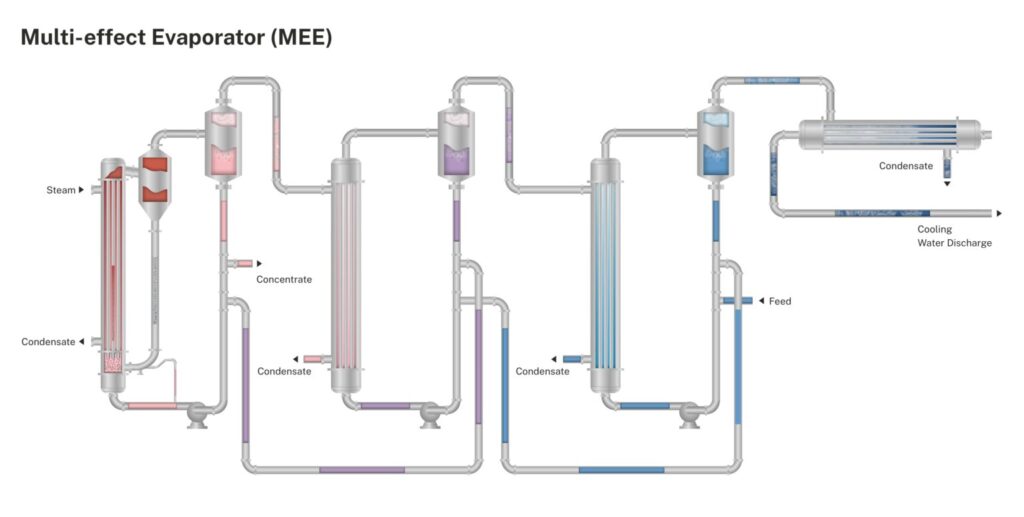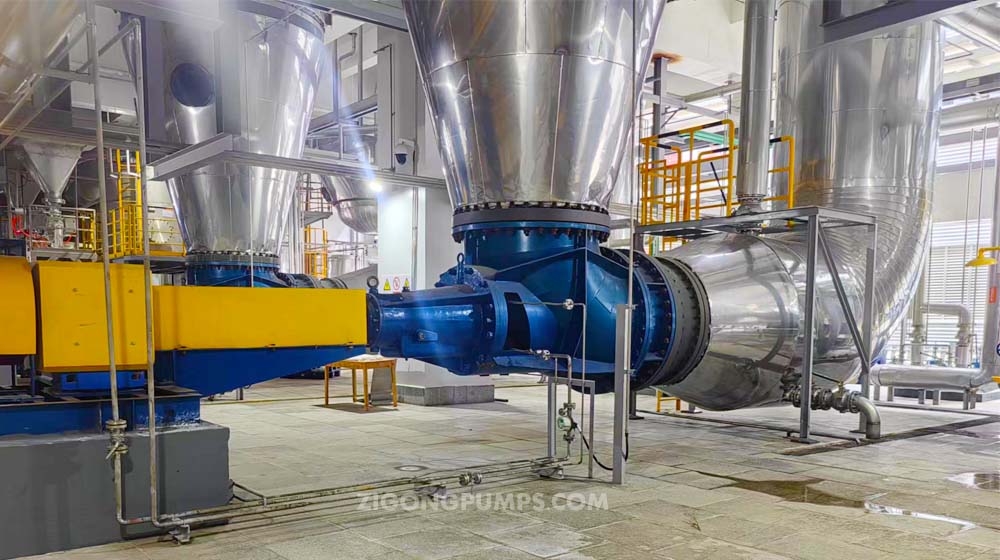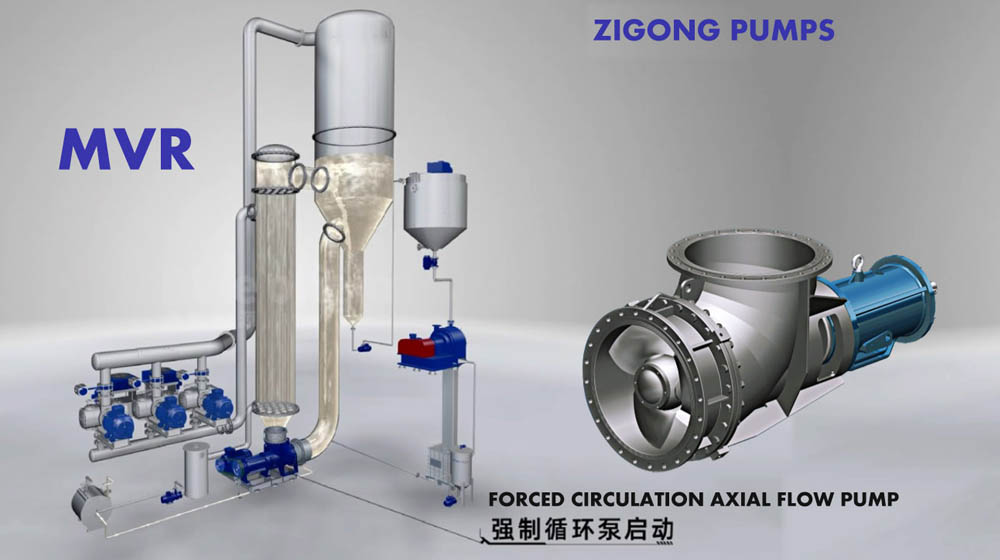Multi-effect evaporators represent a widely employed class of evaporation equipment across industries like chemical, food, and pharmaceuticals. Their primary function revolves around solvent removal through the evaporation process, resulting in concentrated liquids or solid products. What sets multi-effect evaporators apart is their high efficiency in evaporation and comparatively low energy consumption, making them extensively utilized in industrial production. In this article, we’ll delve into the principles and processes underlying multi-effect evaporators.
1.Principle of Multi-Effect Evaporators
Multi-effect evaporators operate by harnessing the sequential action of multiple evaporators, utilizing the heat from one to heat the solution in the next. This enables the repeated utilization of thermal energy, enhancing evaporation efficiency while reducing energy consumption. The principle is rooted in the thermodynamics of heat transfer and phase change processes.
In a multi-effect evaporator setup, the initial evaporator (the first effect) typically utilizes an external heat source, such as steam, to initiate boiling and vapor generation within the solution. The resulting vapor flows into the subsequent evaporator (the second effect), acting as the heat source to further heat the solution within it, thus inducing boiling and vaporization. This process continues iteratively, with each subsequent effect utilizing the vapor generated by the preceding one.
As each evaporator capitalizes on the heat from its predecessor, multi-effect evaporators achieve multiple rounds of thermal energy utilization, consequently boosting evaporation efficiency and minimizing energy consumption. Moreover, precise control over the quality and quantity of the concentrated liquid can be achieved by adjusting operational parameters such as temperature, pressure, and flow rate across the various evaporators.

2.Multi-Effect Evaporator Process
The process of a multi-effect evaporator comprises several key steps:
- **Solution Preheating:** Before entering the evaporator, the solution undergoes preheating to elevate its temperature and reduce viscosity, facilitating heat transfer and flow during evaporation.
- **Feed Distribution:** The preheated solution is pumped into each evaporator, where it is distributed based on the requirements and operational conditions of each unit.
- **Evaporation Process:** Within the evaporator, the solution boils under the influence of the heat source, with the solvent evaporating into vapor while solutes remain in the concentrated liquid. Vapor transfer and heat utilization between different evaporators enable multi-effect evaporation.
- **Steam Condensation and Recovery:** Vapor generated in the final evaporator undergoes condensation in a condenser, transforming it back into liquid water. This condensed water can be reclaimed for reuse, reducing wastewater discharge.
- **Concentrated Liquid Discharge:** Following multi-effect evaporation, the resulting concentrated liquid is discharged from the evaporator via a discharge pump, either as the final product or as raw material for further processing.
- **Cleaning and Maintenance:** Regular cleaning and maintenance of equipment are necessary during evaporator operation to ensure smooth equipment functioning and consistent product quality.
In summary, multi-effect evaporators achieve high efficiency and energy savings by serially connecting multiple evaporators and utilizing thermal energy multiple times. In practical applications, selecting suitable evaporator types, operational parameters, and equipment configurations is crucial to ensure smooth production processes and reliable product quality. Additionally, regular equipment maintenance and upkeep are essential to prolong equipment lifespan and enhance production efficiency.
3.Evaporative crystallization axial flow pump
An evaporative crystallization axial flow pump is a specialized pump used in the process of evaporative crystallization. This type of pump is designed to facilitate the circulation of liquid within the crystallizer vessel, promoting the growth of crystals as the solvent evaporates.
Unlike traditional pumps, axial flow pumps are characterized by their unique design, which allows for the movement of fluid parallel to the pump shaft. This axial flow movement ensures efficient circulation within the crystallizer, which is essential for the crystallization process to occur effectively.
In the context of evaporative crystallization, the axial flow pump plays a crucial role in maintaining the desired concentration and temperature gradients within the crystallizer, thereby promoting the formation and growth of crystals. By continuously circulating the solution, the pump helps to prevent localized supersaturation and ensures uniform crystal growth throughout the solution.
Overall, the evaporative crystallization axial flow pump is an integral component in the crystallization process, contributing to the production of high-quality crystals with consistent properties.
4.Leading China Axial Flow Pump Manufacturer
Sichuan Zigong Industrial Pump Co. Ltd is the largest and leading axial flow pump manufacturer in western China, providing DN250mm-1800mm axial flow pump, expecially developed for evaporators from the fields of chlor alkali、lithium material、 MVR waste water treatment and other chemical industries. Please click here for more product information.


